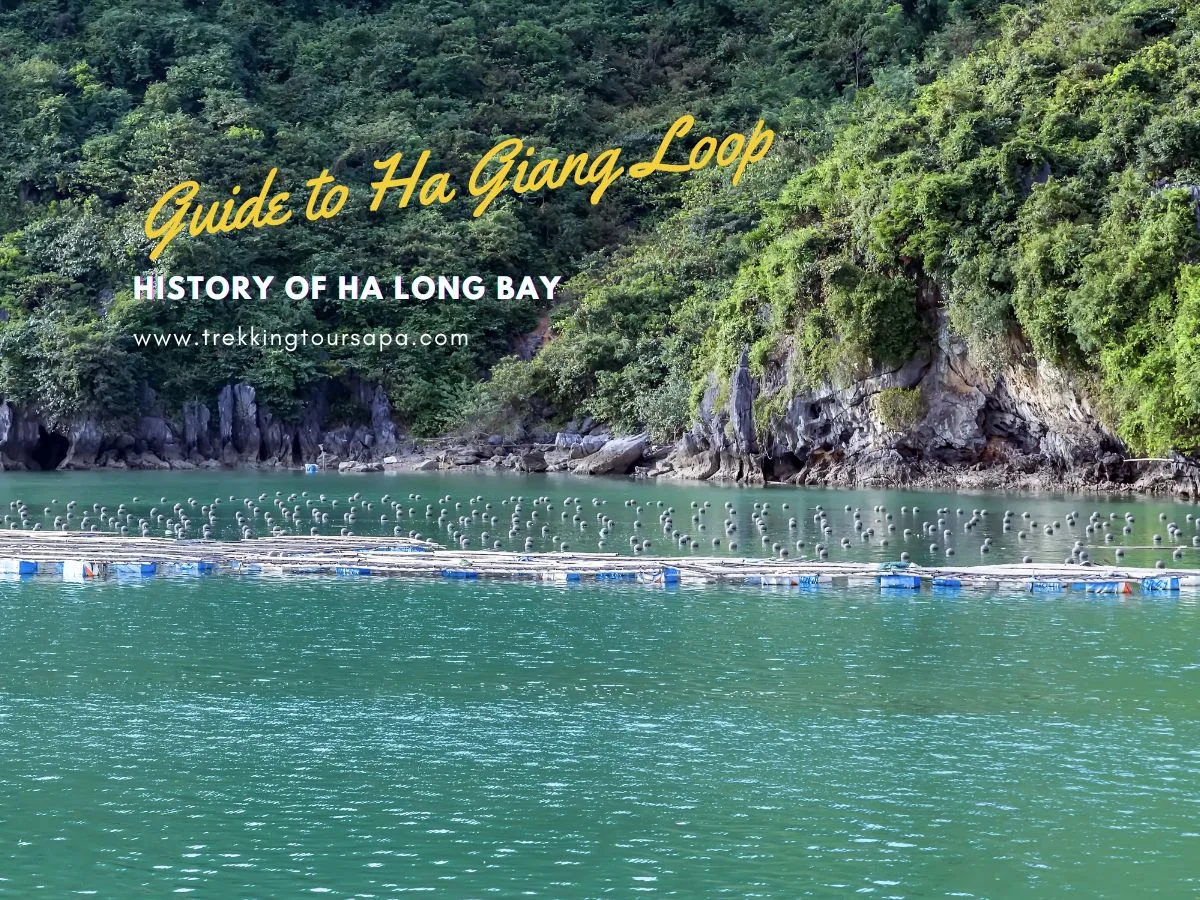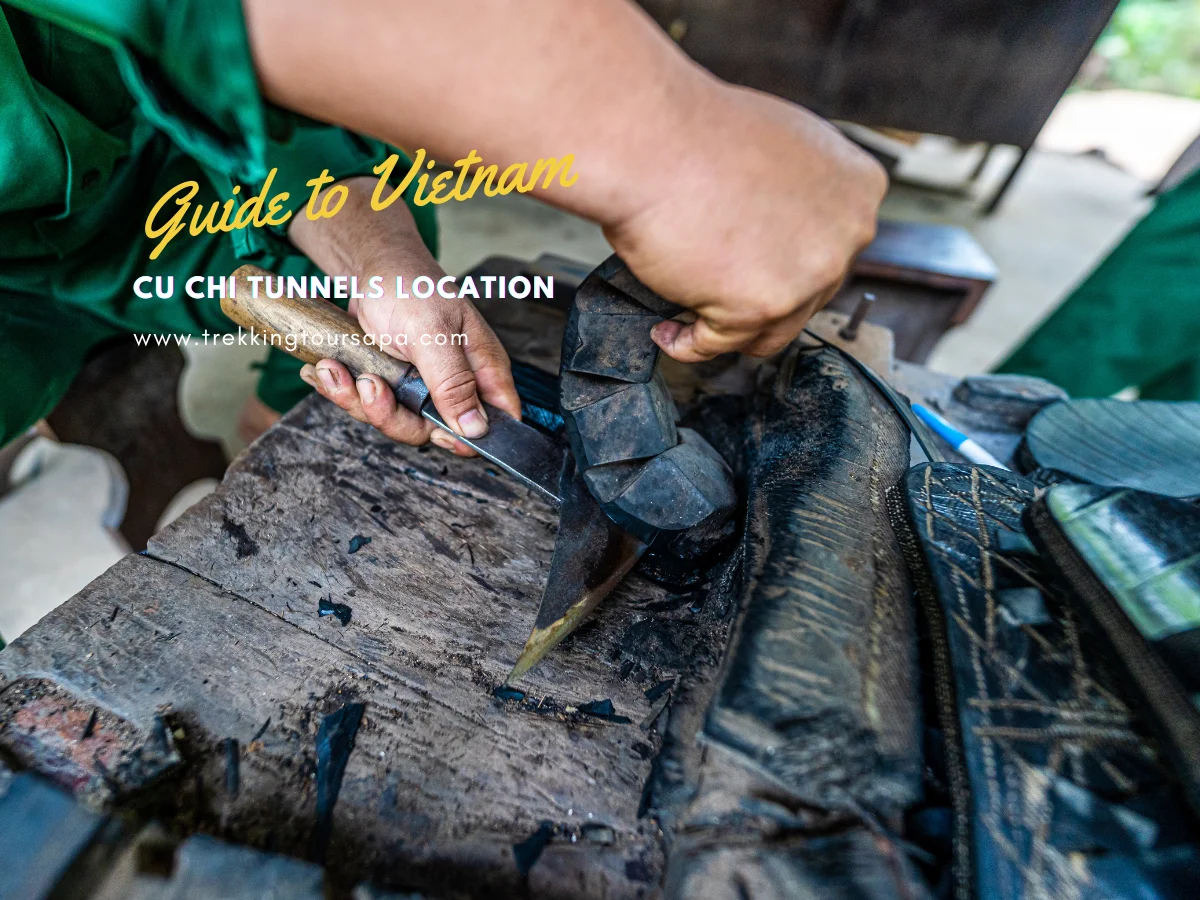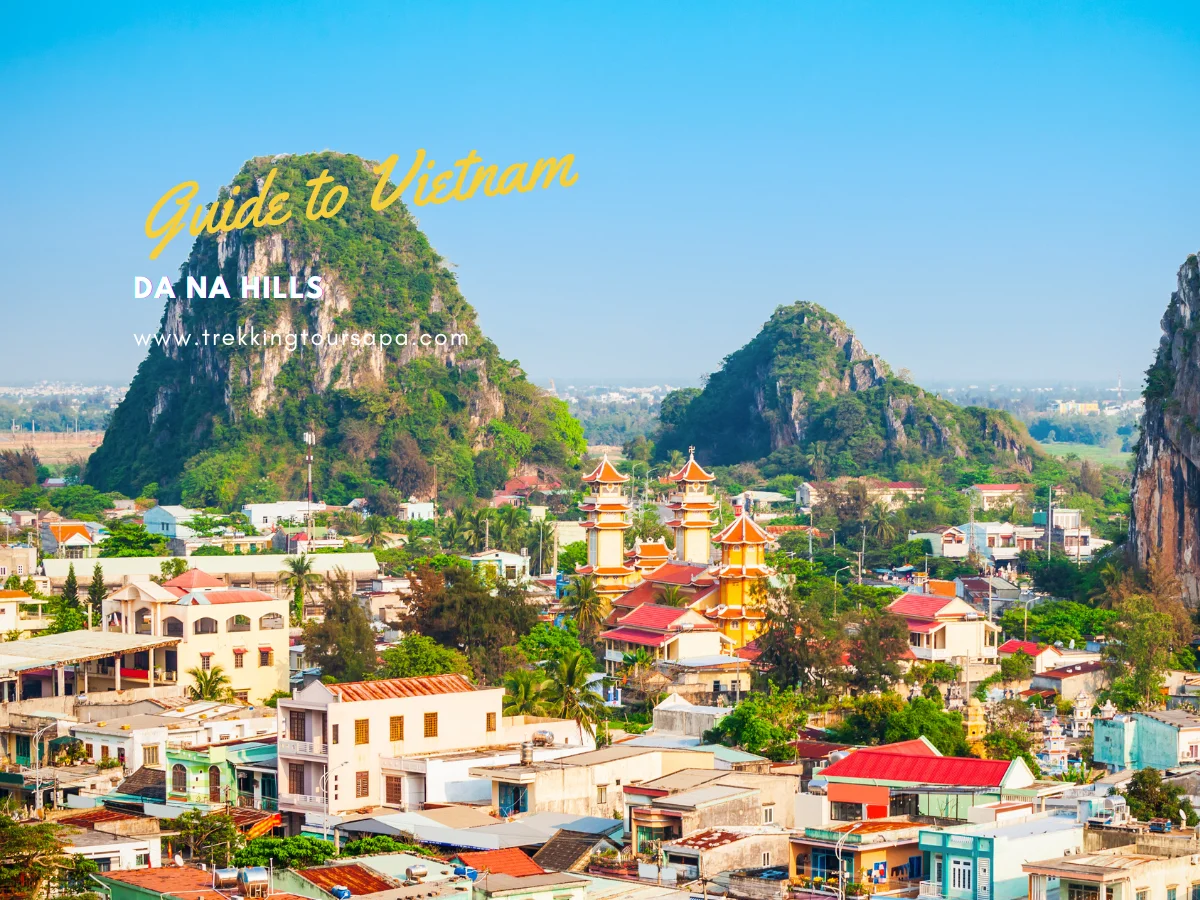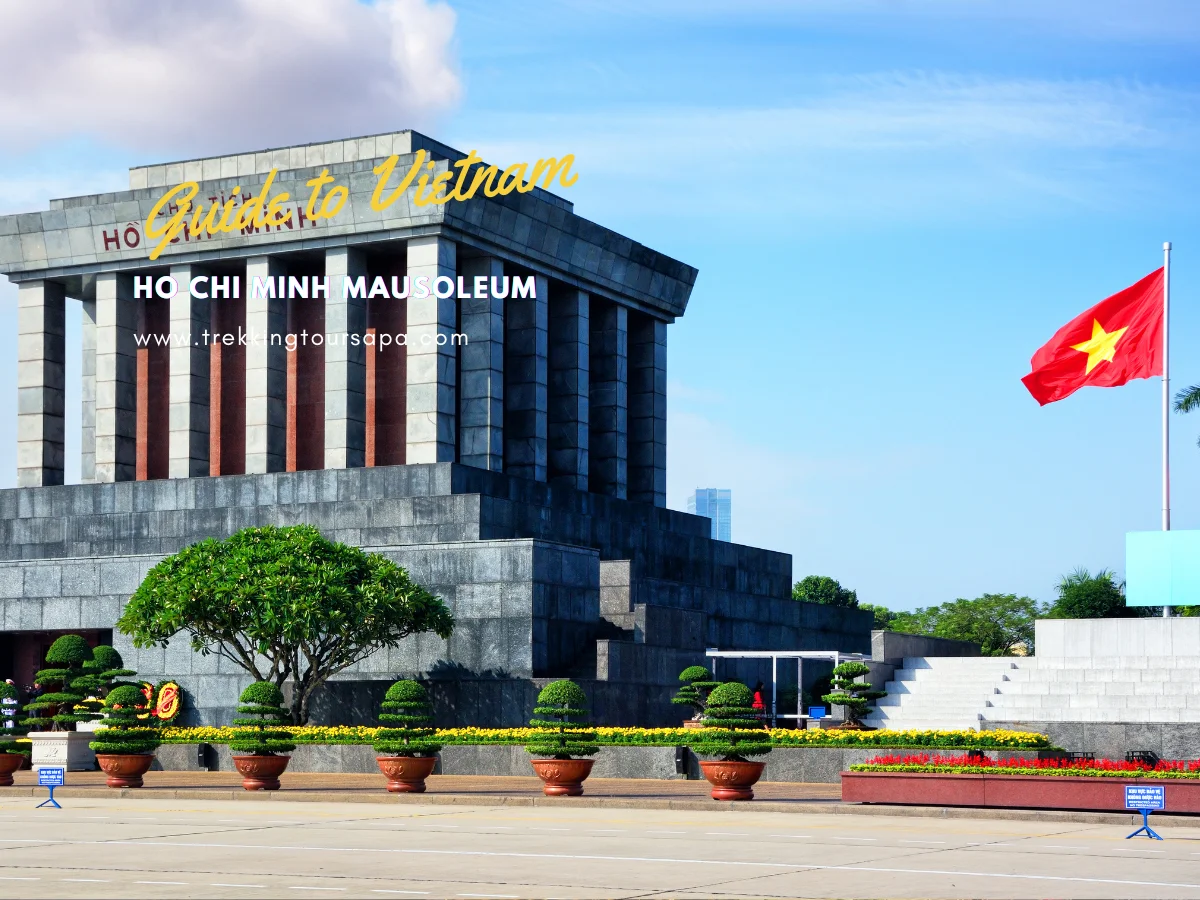Ha Long Bay holds a rich history that spans thousands of years, making it a truly remarkable destination. Located in northeastern Vietnam, this UNESCO World Heritage site is renowned for its stunning seascape and mesmerizing limestone formations. The name “Ha Long” translates to “descending dragon” in Vietnamese, reflecting the significance of dragons in Vietnamese culture. Legend has it that a dragon and her children descended from heaven to protect the people of Vietnam, and their remains formed the islands and islets that dot the bay.
The history of Ha Long Bay can be traced back to ancient times, with evidence of human presence and the existence of ancient civilizations such as the Soi Nhu, Cai Beo, and Ha Long cultures. These ancient cultures left behind fascinating artifacts and remnants that offer insights into the past.

In the 19th century, French geologists discovered Ha Long Bay, further unveiling its beauty and uniqueness to the world. Since then, it has become a popular tourist destination, attracting visitors from all corners of the globe.
Visitors to Ha Long Bay can embark on overnight boat tours, allowing them to immerse themselves in the breathtaking scenery and explore hidden caves and lagoons. Kayaking is also a popular activity, offering a unique perspective of the bay and its limestone pillars.
The best time to visit Ha Long Bay is from March to May or September to November when the weather is pleasant and the bay is not crowded with tourists. Avoiding the extreme heat of summer and the heavy rainfall of the monsoon season ensures a more enjoyable experience.
Ha Long Bay is not only a natural wonder but also a cultural treasure. Its fascinating legends and rich history add depth and significance to this enchanting destination. From the majestic limestone formations to the captivating tales of dragons, Ha Long Bay offers a truly extraordinary experience for all who visit.
Sapa 1 Day Tours

- 1 day experience
- Moderate to challenging
- Cultural immersion & active adventure
- Rice fields, valleys & villages
- Private tours
- Vegan-friendly
Sapa 2 Day Tours

- 2 days 1 night experience
- Moderate to challenging
- Cultural immersion & active adventure
- Mountains, valleys, rice fields and villages
- Private tours
- Vegan-friendly
Sapa 3 Day Tours
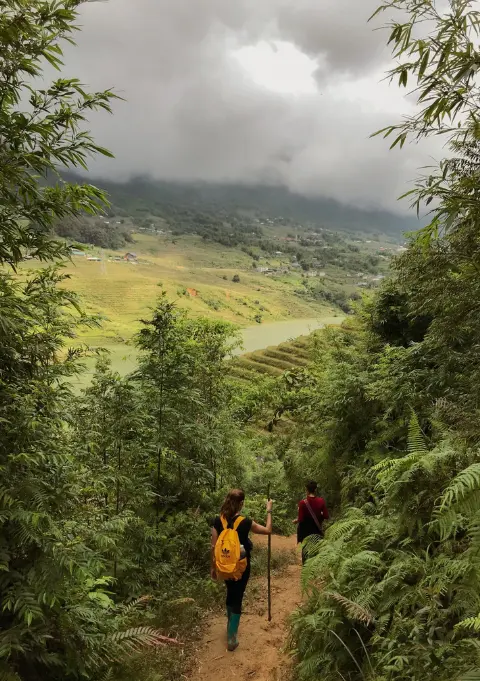
- 3 days 2 night experience
- Moderate to challenging
- Cultural immersion & active adventure
- Mountains, valley, rice fields & villages
- Private tours
- Vegan-friendly
Sapa 4 Day Tours

- 4 days 3 night experience
- Moderate to challenging
- Cultural immersion & active adventure
- Mountains, valleys, rice fields & villages
- Private tours – Less Touristic
- Vegan-friendly
Key Takeaways:
- Ha Long Bay is a UNESCO World Heritage site in northeastern Vietnam, known for its stunning seascape and limestone formations.
- The name “Ha Long” translates to “descending dragon” in Vietnamese, reflecting the cultural significance of dragons in Vietnamese mythology.
- The history of Ha Long Bay dates back thousands of years, with evidence of human presence and ancient civilizations such as the Soi Nhu, Cai Beo, and Ha Long cultures.
- French geologists discovered Ha Long Bay in the 19th century, leading to its recognition as a popular tourist destination.
- Visitors can explore Ha Long Bay through overnight boat tours, kayaking, and cave visits.
Table of Contents
ToggleThe Ancient Origins of Ha Long Bay
To understand the history of Ha Long Bay, we must go back in time to its ancient origins. This breathtaking UNESCO World Heritage site in northeastern Vietnam has a rich and fascinating past that dates back thousands of years.

Legend has it that the bay was formed by dragons who descended from heaven to protect the Vietnamese people. These majestic creatures left behind their remains, which transformed into the stunning islands and islets that dot the bay. The name “Hạ Long” itself means “descending dragon” in Vietnamese, paying homage to the important role dragons played in Vietnamese culture.
But the history of Ha Long Bay goes beyond mythical creatures. Archaeological evidence reveals the presence of ancient civilizations that inhabited the bay, such as the Soi Nhu, Cai Beo, and Ha Long cultures. These early inhabitants left behind traces of their existence, offering us a glimpse into their lives and the development of human civilization in this region.
It was in the 19th century that the bay gained international recognition when French geologists discovered its breathtaking beauty. Since then, Ha Long Bay has become a popular tourist destination, attracting visitors from all over the world. Exploring the bay today offers a unique opportunity to witness the convergence of ancient history and natural wonder.
Tables:

| Time Period | Ancient Civilizations |
|---|---|
| Approximately 18,000 – 5,000 BCE | Soi Nhu culture |
| Approximately 6,000 – 3,000 BCE | Cai Beo culture |
| Approximately 3,000 – 1,000 BCE | Ha Long culture |
As we explore Ha Long Bay, we can’t help but marvel at the ancient origins that shaped this remarkable landscape. It is a testament to the enduring legacy of the past and a reminder of the timeless beauty that continues to captivate visitors to this day.
Legends and Myths of Ha Long Bay
Ha, Long Bay is not only known for its natural beauty but also for the rich cultural history that surrounds it. Legends and myths have shaped the identity of this enchanting UNESCO World Heritage site, adding an air of mystery and intrigue.
According to Vietnamese legend, Ha Long Bay was created by dragons, making it a place of divine significance. It is believed that a dragon and her children descended from heaven, spitting out jade and forming the islands and islets that dot the bay. These limestone formations, with their unique shapes and sizes, are said to be the remains of the dragons and serve as a testament to their protective presence.

The cultural history of Ha Long Bay goes beyond the dragon myths. Ancient civilizations such as the Soi Nhu, Cai Beo, and Ha Long cultures have left behind evidence of their presence in the form of archaeological sites and artifacts. These ancient communities thrived in the bay, leaving a lasting imprint on its history and heritage.
| Legends and Myths of Ha Long Bay | Historical Landmarks |
|---|---|
| Dragon myths and divine significance | Archaeological sites of ancient civilizations |
| Belief in the protective powers of dragons | Remains of the dragons in limestone formations |
Sapa 1 Day Tours

- 1 day experience
- Moderate to challenging
- Cultural immersion & active adventure
- Rice fields, valleys & villages
- Private tours
- Vegan-friendly
Sapa 2 Day Tours

- 2 days 1 night experience
- Moderate to challenging
- Cultural immersion & active adventure
- Mountains, valleys, rice fields and villages
- Private tours
- Vegan-friendly
Sapa 3 Day Tours

- 3 days 2 night experience
- Moderate to challenging
- Cultural immersion & active adventure
- Mountains, valley, rice fields & villages
- Private tours
- Vegan-friendly
Sapa 4 Day Tours

- 4 days 3 night experience
- Moderate to challenging
- Cultural immersion & active adventure
- Mountains, valleys, rice fields & villages
- Private tours – Less Touristic
- Vegan-friendly
Exploring the cultural history of Ha Long Bay is like embarking on a journey through time. Each legend and myth adds to the tapestry of this captivating destination, enticing visitors to discover the stories that have shaped its identity.
Evidence of Human Presence
Archaeological findings have provided us with valuable insights into the early human presence in Ha Long Bay. The bay’s history stretches back thousands of years, with evidence of various ancient civilizations that once called this stunning destination home. Among the notable cultures that inhabited Ha Long Bay are the Soi Nhu, Cai Beo, and Ha Long cultures.
The Soi Nhu culture, which dates back to the Neolithic era, left behind an array of fascinating artifacts. Excavations have revealed pottery, stone tools, and even burials, shedding light on the daily lives and burial practices of these early inhabitants.
The Cai Beo culture, which emerged around 6,000 to 7,000 years ago, built their villages on the bay’s sheltered islands and islets. Archaeologists have discovered remnants of their dwellings, including house foundations and stone tools, offering a glimpse into their sophisticated fishing and maritime lifestyles.

The Ha Long culture, which thrived around 2,500 to 3,000 years ago, left behind megalithic structures and traces of a complex social structure. These impressive stone structures, some resembling ancestral worship altars, suggest a highly organized society with intricate religious beliefs.
| Culture | Time Period |
|---|---|
| Soi Nhu | Neolithic era |
| Cai Beo | 6,000 to 7,000 years ago |
| Ha Long | 2,500 to 3,000 years ago |
The presence of these ancient cultures in Ha Long Bay is a testament to the enduring human fascination with this remarkable destination. Exploring the archaeological sites and artifacts allows us to connect with the rich history and cultural heritage of this UNESCO World Heritage site.
French Exploration and Discovery

The fascinating history of Ha Long Bay took a significant turn with the arrival of French geologists in the 19th century. These explorers were captivated by the natural beauty of the bay and played a crucial role in uncovering its secrets.
French geologists such as Alexandre de Rhodes and Louis Balleydier conducted extensive surveys and research, documenting the unique geological features of Ha Long Bay. Their studies revealed the formation of the bay’s limestone karsts over millions of years, creating a breathtaking seascape that attracts visitors from all over the world.
Not only did the French geologists contribute to the scientific understanding of Ha Long Bay, but they also played a part in introducing this hidden gem to the world. Their writings and reports sparked interest and curiosity, leading to a growing recognition of the bay’s cultural and historical significance.
| French Geologists in Ha Long Bay | Contributions |
|---|---|
| Alexandre de Rhodes | Conducted surveys and documented the geological features of the bay |
| Louis Balleydier | Studied the formation of the limestone karsts in Ha Long Bay |

Thanks to the efforts of the French geologists, Ha Long Bay gained recognition as a natural wonder and eventually achieved UNESCO World Heritage status. Today, visitors can explore this majestic landscape, immersing themselves in its rich history and marveling at the wonders that were first discovered by these pioneering explorers.
Ha Long Bay Today
Ha Long Bay has become a renowned tourist destination, attracting visitors from all over the world. The bay’s natural beauty, with its stunning seascape and limestone formations, captivates the imagination and leaves a lasting impression on all who visit. But it’s not just the breathtaking landscapes that make Ha Long Bay a popular choice for travelers.
When exploring Ha Long Bay, there are numerous activities that visitors can engage in to fully experience its wonders. One of the most popular ways to explore the bay is by taking overnight boat tours, which allow you to sail through the emerald waters and witness the beauty of the limestone cliffs up close. Kayaking is another thrilling activity that lets you navigate through the picturesque waterways and discover hidden gems along the way. No visit to Ha Long Bay is complete without exploring its magnificent caves, each with its unique charm and history.

To help you plan the perfect trip, it’s important to consider the best time to visit Ha Long Bay. The months of March to May and September to November offer pleasant weather conditions, avoiding extreme heat and the monsoon seasons. This allows you to fully enjoy the beauty of the bay without the discomfort of unfavorable weather.
| Activities | Highlights |
|---|---|
| Overnight boat tours | Sail through the emerald waters and witness the beauty of limestone cliffs up close. |
| Kayaking | Navigate through picturesque waterways and discover hidden gems. |
| Cave visits | Explore magnificent caves with unique charm and history. |
With its fascinating legends, rich history, and UNESCO World Heritage status, Ha Long Bay is not only a natural wonder but also a cultural treasure. The captivating tales of dragons and the ancient origins of the bay add to its allure, making it a destination that truly stands out. Whether you’re a nature enthusiast, a history buff, or simply seeking a memorable adventure, Ha Long Bay offers something for everyone.
Exploring Ha Long Bay

There are numerous exciting ways to explore the wonders of Ha Long Bay, allowing visitors to truly immerse themselves in its beauty. One of the most popular options is to take an overnight boat tour, which provides the perfect opportunity to relax and soak in the breathtaking scenery. These tours typically include comfortable accommodations on board, allowing you to wake up to stunning views and start your day with a refreshing swim in the bay’s crystal-clear waters.
For those seeking adventure, kayaking is an excellent choice. Paddling through the bay’s labyrinth of limestone karsts and hidden caves is a surreal experience, offering a unique perspective of Ha Long Bay’s remarkable geological formations. As you navigate the emerald waters, you’ll have the chance to discover secluded lagoons and picturesque beaches, creating unforgettable memories along the way.
A visit to the bay’s enchanting caves is another must-do activity. Thien Cung Cave and Sung Sot Cave are two of the most famous caves in Ha Long Bay, known for their stunning stalactite formations and awe-inspiring chambers. Exploring these ancient wonders is like stepping into a magical underground world, filled with mystery and wonder.
Sapa 1 Day Tours

- 1 day experience
- Moderate to challenging
- Cultural immersion & active adventure
- Rice fields, valleys & villages
- Private tours
- Vegan-friendly
Sapa 2 Day Tours

- 2 days 1 night experience
- Moderate to challenging
- Cultural immersion & active adventure
- Mountains, valleys, rice fields and villages
- Private tours
- Vegan-friendly
Sapa 3 Day Tours

- 3 days 2 night experience
- Moderate to challenging
- Cultural immersion & active adventure
- Mountains, valley, rice fields & villages
- Private tours
- Vegan-friendly
Sapa 4 Day Tours

- 4 days 3 night experience
- Moderate to challenging
- Cultural immersion & active adventure
- Mountains, valleys, rice fields & villages
- Private tours – Less Touristic
- Vegan-friendly
| Activity | Duration |
|---|---|
| Overnight boat tour | 1-2 days |
| Kayaking | Half-day or full-day |
| Cave visits | 1-2 hours |
Whether you choose to embark on an overnight boat tour, go kayaking, or explore the captivating caves, you’re in for an unforgettable adventure in Ha Long Bay. The combination of stunning natural landscapes and rich cultural heritage makes this destination truly remarkable. So, get ready to discover the wonders of Ha Long Bay and create memories that will last a lifetime!
Best Time to Visit Ha Long Bay
Planning your visit to Ha Long Bay requires careful consideration of the weather and tourist seasons. To make the most of your trip, it’s essential to choose the best time when the weather is favorable, and the crowds are more manageable.
The ideal time to visit Ha Long Bay is from March to May or September to November. These shoulder seasons offer pleasant temperatures, lower humidity, and fewer tourists compared to the peak summer and winter months.
During spring (March to May) and autumn (September to November), the weather in Ha Long Bay is mild and comfortable, with temperatures ranging from 20°C to 30°C (68°F to 86°F). It’s the perfect time to explore the bay’s stunning limestone formations, go kayaking in the calm waters, and visit the captivating caves.

On the other hand, the hot and humid summer months (June to August) can be challenging for outdoor activities, with temperatures reaching up to 40°C (104°F) and occasional heavy rainfall. The winter months (December to February) bring cooler temperatures, ranging from 10°C to 20°C (50°F to 68°F), and occasional fog, which may obstruct the views of the bay’s natural beauty. However, it’s still possible to enjoy the serene atmosphere and take part in activities like fishing or overnight boat tours.
By planning your visit to Ha Long Bay during the recommended months, you can maximize your experience and fully appreciate the natural wonder and cultural treasure that this UNESCO World Heritage site has to offer.
Table: Average Monthly Temperatures
| Month | Average Temperature (°C) |
|---|---|
| January | 18 |
| February | 18 |
| March | 20 |
| April | 23 |
| May | 27 |
| June | 30 |
| July | 31 |
| August | 30 |
| September | 28 |
| October | 25 |
| November | 23 |
| December | 20 |
Source: Ha Long Bay Tourism Board

Ha Long Bay’s Natural and Cultural Treasures
Ha Long Bay is not only a natural wonder but also a cultural treasure, boasting incredible landscapes and a rich heritage. Its stunning seascape, characterized by towering limestone formations and emerald-green waters, draws visitors from around the world. This UNESCO World Heritage site holds a deep historical significance and is steeped in legends and myths that have shaped its identity.
The bay’s unique beauty lies in its thousands of limestone karsts and islets, which emerge dramatically from the sea, creating a breathtaking panorama. These natural formations have been shaped over millions of years through the processes of erosion and tectonic activity, resulting in a landscape that is both awe-inspiring and mesmerizing.
Additionally, Ha Long Bay is home to a rich cultural heritage. The legend of the descending dragon, from which the bay derives its name, reflects the significance of dragons in Vietnamese culture. According to the legend, dragons were revered as protectors of the Vietnamese people, and their remains formed the islands and islets that dot the bay. This mythical connection adds a sense of mystique to the already extraordinary scenery.

| Natural Treasures | Cultural Treasures |
|---|---|
|
|
Immerse yourself in the natural and cultural treasures of Ha Long Bay, where the beauty of nature intertwines with the enchanting legends of dragons. Explore hidden caves, kayak through emerald waters, or simply marvel at the majestic limestone formations that have stood the test of time. Ha Long Bay is a testament to the wonders of the natural world and the enduring human spirit.
Preserving Ha Long Bay’s Heritage

Preserving the natural and cultural treasures of Ha Long Bay is of utmost importance to ensure its continued beauty and significance for generations to come. Efforts are being made to protect the bay’s fragile ecosystem and promote sustainable tourism practices. Visitors are encouraged to adhere to responsible travel guidelines, such as not littering and respecting the local culture and traditions. By safeguarding this invaluable heritage, we can ensure that Ha Long Bay remains a destination of wonder and inspiration for years to come.
The Significance of Dragons in Ha Long Bay
Dragons hold a special place in Vietnamese culture, and their presence in Ha Long Bay is deeply intertwined with local folklore and beliefs. According to legend, a mother dragon and her children descended from heaven to protect the Vietnamese people from invaders. As they flew over the bay, the mother dragon released 3000 eggs, which transformed into thousands of limestone islets and islands that make up the majestic seascape we see today.

This mystical tale has become an integral part of Ha Long Bay’s history and identity. The locals believe that the dragons’ presence brings luck and prosperity to the area. Many of the limestone formations in Ha Long Bay are named after this legend, such as the Dragon Islet and the Heavenly Palace Cave, which is said to be the place where the mother dragon landed.
Visitors to Ha Long Bay can immerse themselves in this rich dragon mythology by exploring the various landmarks and caves that are associated with the legend. Marvel at the towering limestone formations that resemble dragons emerging from the emerald waters, and venture into the caves adorned with stalactites and stalagmites that create a mystical atmosphere. These experiences allow visitors to connect with the cultural and historical significance of dragons in Ha Long Bay.
| Key Takeaways: |
|---|
| The legend of dragons descending from heaven is deeply ingrained in Vietnamese culture and has shaped the formation of Ha Long Bay’s unique landscape. |
| Many of the limestone formations and caves in Ha Long Bay are associated with the dragon legend, adding to the mystical charm of the area. |
| Exploring the landmarks and caves connected to the legend provides visitors with a deeper understanding of the cultural and historical significance of dragons in Ha Long Bay. |
Sapa 1 Day Tours

- 1 day experience
- Moderate to challenging
- Cultural immersion & active adventure
- Rice fields, valleys & villages
- Private tours
- Vegan-friendly
Sapa 2 Day Tours

- 2 days 1 night experience
- Moderate to challenging
- Cultural immersion & active adventure
- Mountains, valleys, rice fields and villages
- Private tours
- Vegan-friendly
Sapa 3 Day Tours

- 3 days 2 night experience
- Moderate to challenging
- Cultural immersion & active adventure
- Mountains, valley, rice fields & villages
- Private tours
- Vegan-friendly
Sapa 4 Day Tours

- 4 days 3 night experience
- Moderate to challenging
- Cultural immersion & active adventure
- Mountains, valleys, rice fields & villages
- Private tours – Less Touristic
- Vegan-friendly
Iconic Landmarks of Ha Long Bay
Ha Long Bay is renowned for its breathtaking limestone formations and stunning islands and islets that create a mesmerizing seascape. The bay is dotted with thousands of towering limestone karsts, each with its unique shape and character. These magnificent formations have been shaped over millions of years by the forces of nature, resulting in a landscape that is both awe-inspiring and otherworldly.
One of the most famous landmarks in Ha Long Bay is Hang Sung Sot, also known as the Surprise Cave. This expansive cave system is a true wonder of nature, with its intricate stalactites and stalagmites forming mesmerizing shapes and patterns. Visitors can explore the cave’s chambers, marveling at the natural beauty that lies within.
Another iconic landmark in Ha Long Bay is Titop Island. Named after a Russian astronaut, Titop Island offers stunning panoramic views of the bay from its summit. Visitors can climb to the top of the island, take in the breathtaking scenery, and even enjoy a refreshing swim in the crystal-clear waters surrounding the island.
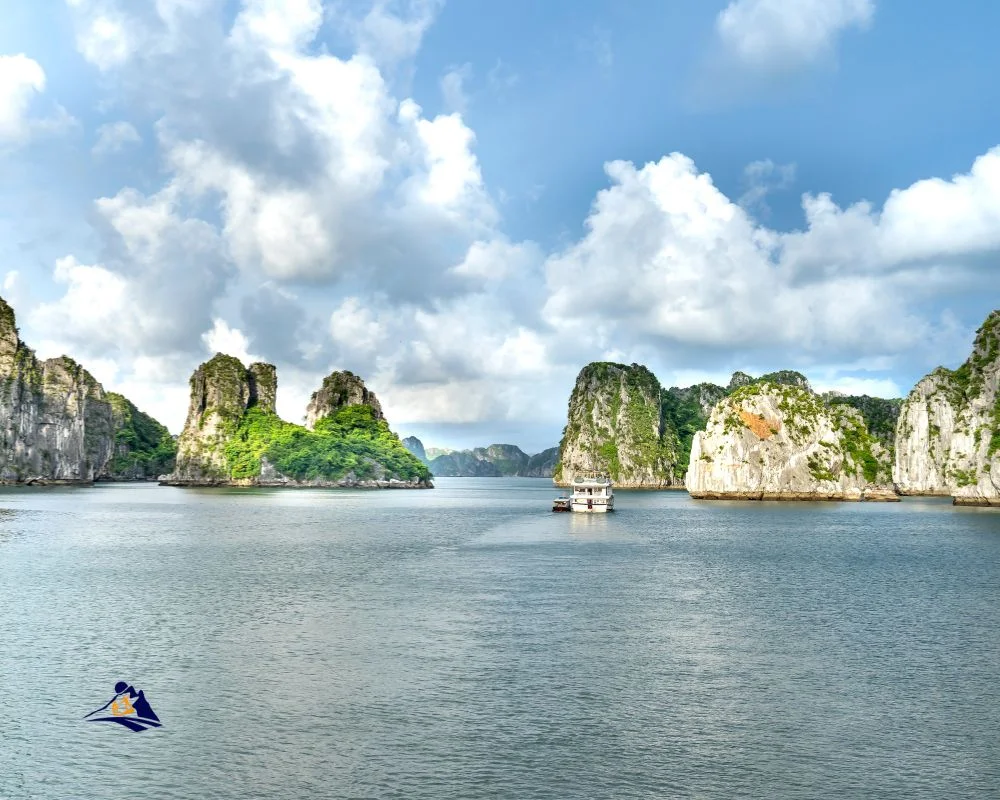
Table 1: Ha Long Bay’s Iconic Landmarks
| Landmark | Description |
|---|---|
| Hang Sung Sot | A magnificent cave system with intricate stalactites and stalagmites. |
| Titop Island | An island offering stunning panoramic views and a beautiful beach. |
One cannot talk about the iconic landmarks of Ha Long Bay without mentioning the breathtaking limestone islets known as the Stone Dogs. These rock formations resemble dogs standing guard over the bay and have become a symbol of Ha Long Bay’s natural beauty. They serve as a reminder of the ancient legends and mythical creatures that have played a significant role in shaping the cultural identity of the region.

Ha Long Bay is a treasure trove of natural wonders and iconic landmarks that continue to captivate visitors from around the world. Whether exploring the surreal caves, scaling the summits of islands, or simply cruising through the bay’s emerald waters, every moment spent in Ha Long Bay is a testament to the timeless beauty and grandeur of this UNESCO World Heritage site.
Ha Long Bay’s UNESCO World Heritage Status
Ha Long Bay’s exceptional beauty and historical importance have led to its recognition as a UNESCO World Heritage site. Located in northeastern Vietnam, Ha Long Bay is renowned for its stunning seascape and unique limestone formations. The bay’s name, Hạ Long, translates to “descending dragon” in Vietnamese, reflecting the mythical significance of dragons in Vietnamese culture.
According to legend, a dragon and her children descended from heaven to protect the Vietnamese people. As they landed in the bay, their tails created deep valleys, while their bodies formed the towering limestone islands and islets that now punctuate the bay’s waters.
The history of Ha Long Bay stretches back thousands of years, with evidence of human presence and ancient civilizations like the Soi Nhu, Cai Beo, and Ha Long cultures. The bay’s archaeological sites provide valuable insights into the lives of these early inhabitants, contributing to our understanding of Vietnam’s rich heritage.
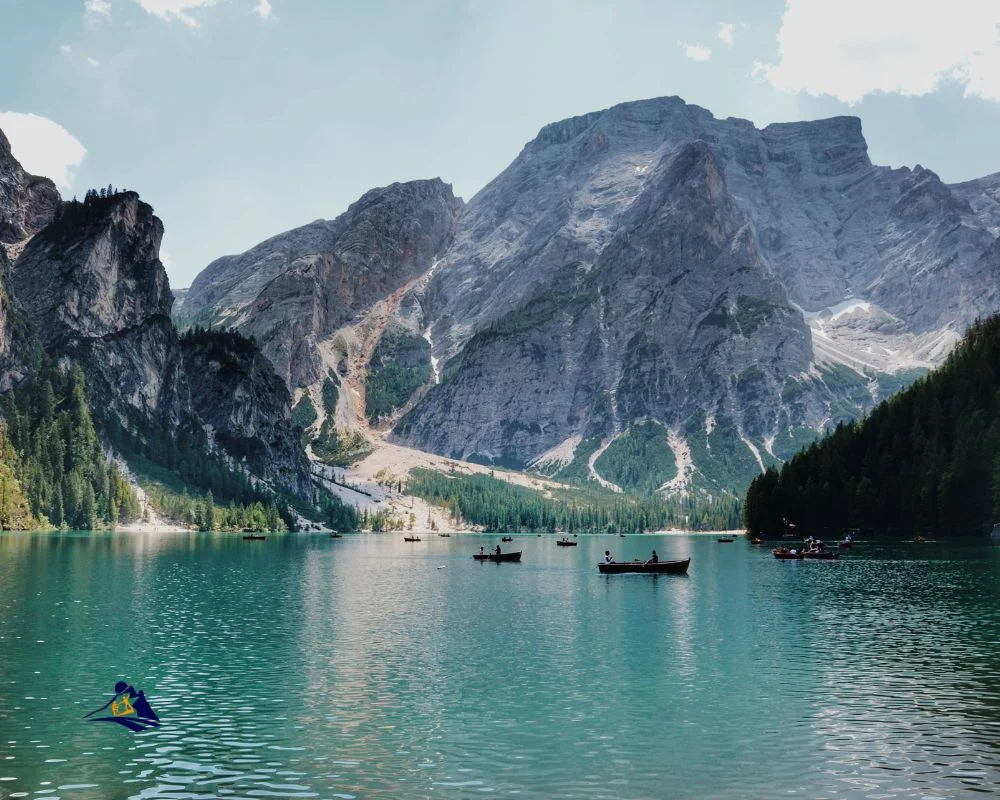
Today, Ha Long Bay has become a popular tourist destination, attracting visitors from around the world. Overnight boat tours offer a unique opportunity to explore the bay’s hidden treasures, while kayaking allows for a closer encounter with its natural wonders. Cave visits unveil the mesmerizing stalactite formations that adorn the bay’s limestone caves.
To make the most of your visit, it is advisable to plan your trip between March and May or September and November when the weather is pleasant and avoids extreme heat and monsoon seasons. By doing so, you can fully appreciate the breathtaking beauty and historical significance of Ha Long Bay, a true natural and cultural treasure.
Uncovering the Fascinating History and Timeless Beauty of Ha Long Bay
As we conclude our journey through the history of Ha Long Bay, we are left in awe of its timeless beauty and the stories it holds within its shores. This UNESCO World Heritage site, located in northeastern Vietnam, is renowned for its stunning seascape and mesmerizing limestone formations.
The name Hạ Long, meaning “descending dragon” in Vietnamese, reflects the mythical significance of dragons in Vietnamese culture. Legend has it that a dragon and her children descended from heaven to protect the Vietnamese people, their tails carving out the majestic islands and islets that adorn the bay.
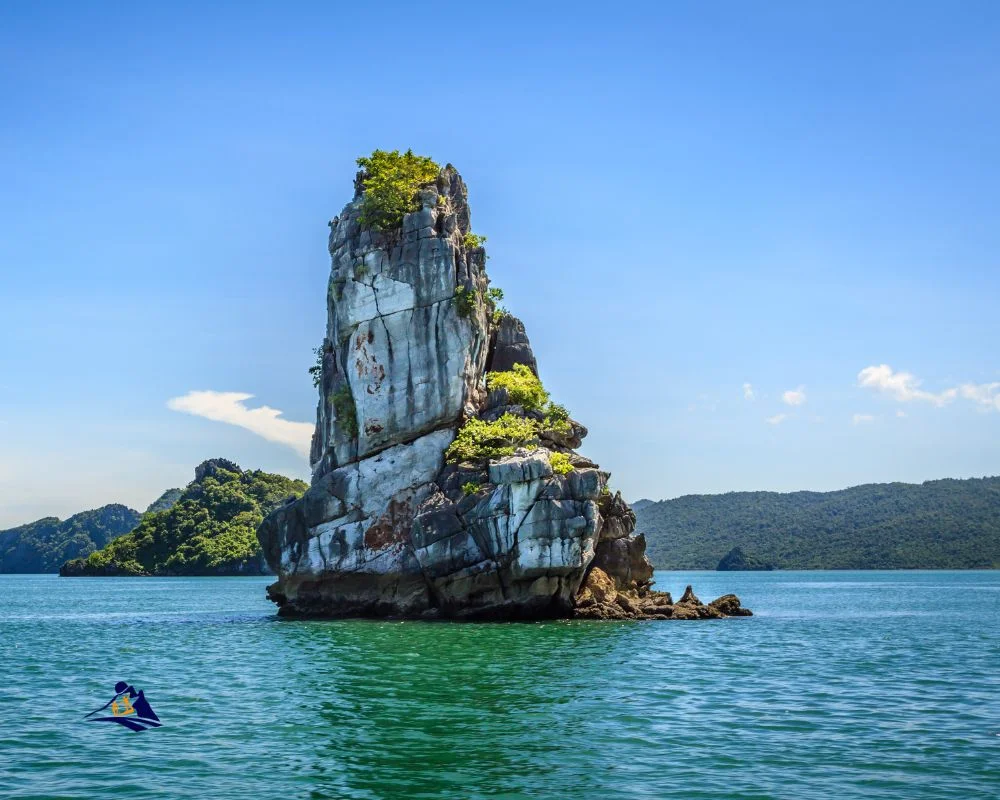
The history of Ha Long Bay spans thousands of years, with archeological evidence revealing the presence of ancient civilizations such as the Soi Nhu, Cai Beo, and Ha Long cultures. These early inhabitants left behind a rich cultural heritage that adds to the allure of the bay.
It was in the 19th century that French geologists stumbled upon this hidden gem, unraveling its splendor to the world. Since then, Ha Long Bay has become a sought-after destination for travelers seeking to immerse themselves in its natural wonders and rich history.
To fully experience the magnificence of Ha Long Bay, visitors can embark on overnight boat tours, allowing them to witness the breathtaking sunset and sunrise over the bay’s emerald waters. Adventurous souls can also explore the hidden corners of the bay by kayaking through its maze-like limestone formations or venturing into its mystical caves.
When planning a visit to Ha Long Bay, it’s best to consider the favorable weather conditions. The months of March to May and September to November offer pleasant temperatures and clearer skies, ensuring a memorable experience without the scorching heat or heavy monsoon rains.
Hạ Long Bay is not just a natural wonder, but also a cultural treasure. Its fascinating legends and historical significance make it a place of intrigue and wonder. As we bid farewell to this extraordinary destination, we leave with a deeper appreciation for its timeless beauty and the enchanting tales embedded in its history.
Sapa 1 Day Tours

- 1 day experience
- Moderate to challenging
- Cultural immersion & active adventure
- Rice fields, valleys & villages
- Private tours
- Vegan-friendly
Sapa 2 Day Tours

- 2 days 1 night experience
- Moderate to challenging
- Cultural immersion & active adventure
- Mountains, valleys, rice fields and villages
- Private tours
- Vegan-friendly
Sapa 3 Day Tours

- 3 days 2 night experience
- Moderate to challenging
- Cultural immersion & active adventure
- Mountains, valley, rice fields & villages
- Private tours
- Vegan-friendly
Sapa 4 Day Tours

- 4 days 3 night experience
- Moderate to challenging
- Cultural immersion & active adventure
- Mountains, valleys, rice fields & villages
- Private tours – Less Touristic
- Vegan-friendly
